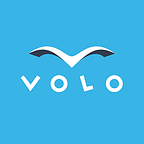A crucial part of planning your outsourcing needs is choosing the pricing model that best fits your business needs and demands. The good news is that most outsourcing companies offer different models to choose from to match your business goals and strategy.
The most common outsourcing models are as follows:
Fixed Price Model
In case of this model, the price of the project is decided right at the start. This model works if you have finalized your project details to a T and can spell out the exact idea and specs of the product to your vendor. Be ready to spend a lot of time honing your requirements before signing a collaboration contract.
The outsourcing company will help you understand what information they need exactly to correctly price your project. This will be achieved through meetings and negotiations, which will greatly simplify your task as you might know your project but not be aware of the technical requirements, the needed IT resources, etc. Afterwards, deliverable milestones will be set.
The pros of a fixed price model include:
· Clearly set requirements
· Lower risks due to high predictability
· Reduced need for supervision
· No unexpected or hidden costs
Some of the cons of the fixed price model are as follows:
· Requires lots of time, effort, and energy right upfront. If you miss a detail, it will be hard to incorporate it into the project scope later.
· Less flexibility: if you need certain changes during the project implementation, new discussions should be carried out and can result in additional costs.
· Trying to take into consideration all possible risks, tech providers might set high prices which is why this model is usually more expensive than others.
The fixed price model works best for MVP outsourcing and start-ups with small projects that have a clearly defined scope.
Time and Material Model
In this scenario, the price will be determined according to the time and material used to execute and deliver the work. This model fits businesses that find it hard to specify their project details and scope and expect multiple tech requirement changes throughout the development process.
The Time and Material model comes with a number of advantages.
- More flexibility when changes are needed
- No strict deadlines
- Improved cost management
- Agile methodology
This model can be the right choice for companies with long-term and complex projects — those that want to define and redefine goals and priorities throughout the project development process, depending on what their business calls for.
The drawbacks of Time and Material pricing model are
- Less clearly defined deadlines
- More difficulties with budget control
Outstaffing Model
The outstaffing (or staffing) model presupposes the provision of dedicated IT staff and developers by the outsourcing company. In other words, you will have developers in your staff who you can go to whenever the need arises. Besides, you will be in direct communication with them and pay them a fixed monthly salary.
Benefits of IT staffing:
- Cost-efficient
- Pricing transparency
- Trial period
- The outsourcing company is in charge of employee management issues
Downsides of IT staffing:
- You need to put in effort to integrate your new remote team with your existing team.
This model works best for ongoing long-term projects.
On-Demand Pricing
When choosing this model, you pay per use, i.e., the outsourcing company sets a rate for a certain service level and your business pays for the amount used.
On-demand pricing can be more efficient in terms of component cost analysis, however, you will need to determine a precise estimation of the demand volume.
Cost-Plus
A cost-plus contract presupposes the payment of all possible costs (fixed and variable) plus a markup percentage to these costs. This model leaves close to no space for flexibility during the product development process.
Performance-Based or Incentive-Based Pricing
Incentive-based pricing suggests the use of financial incentives for better supplier productivity. At the same time, your outsourcing company will have to pay a penalty in case of poor service delivery.
Sometimes the performance-based pricing model is combined with either time and material or fixed-price to enhance the overall collaboration.
Gain-Sharing
In this case, the service price is directly proportional to the delivered value or outcome. You determine where you see the value in the delivered product and then adjust the price based on that value.
This model puts both sides “at risk”, at the same time giving them a chance to gain more in case of a successful collaboration.
Shared Risk/Reward Pricing Model
The outsourcing company and the business owner fund the project development together and share rewards for a predefined time period.
Here again we deal with an equally shared financial risk. This model encourages the outsourcer to think of methods for improving the business and increasing revenue.
That’s not all.
The post-pandemic world has opened up itself to outsourcing like never before. Learn everything there is to know about this broad subject in our ultimate software development outsourcing guide or contact us to get your questions answered if you’re looking to outsource your next software project.
